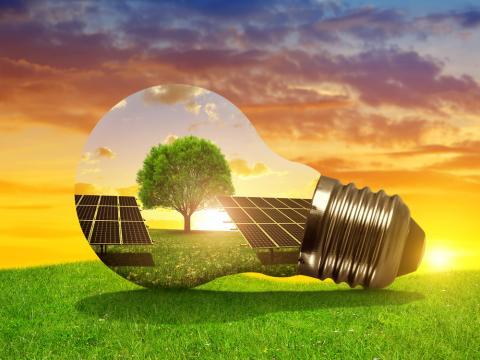
As we discussed in part one of Solar Panels: A Beginner’s Guide, solar panels and solar systems can be very simple but at the same time very complex. A simple system is designed to take the power produced by the sun and absorb it into the solar panels.
In part one, I broke down the three main components that make up a solar system: panels, inverters, and batteries. In this article, we are going to go over a few more pieces of equipment.
The last article ended with the topic of using batteries to store the unused electricity for later use. Deep-cycle batteries are among the best out there to use in a battery bank system for a couple of reasons: first, the deep cycle batteries can handle prolonged and repeated uses, and second, they hold a little more power.
Charge Controllers Or Battery Regulators
When using a battery bank it’s important to have a charge controller or regulator as well. Charge controllers or regulators are a very important addition to any solar system using a battery bank for backup storage and power because this piece of equipment is designed to keep your batteries from becoming overcharged. It will regulate the voltage and the electrical current that comes from the solar panel to the battery. There are two things that can happen if a battery becomes overcharged:
- The battery will become very hot to the touch and begin to swell. If the battery swells too much, it can result in sulfuric acid leaking, which is a bad thing. Sulfuric acid is highly corrosive and can cause a lot of damage and harm, especially if your skin comes in contact with it. Always check your batteries to avoid these issues!
- This next result of an overcharged battery might seem strange; however, it is true. When a battery becomes overcharged there’s a possibility that the battery will die quickly or suddenly.
Is There Something Other Than Batteries That Will Keep The Energy From Backflowing?
There are some people who are not interested in investing in a battery bank system. The good news is: yes, there’s another way to keep your panels from losing their charge at night or when the sun isn’t shining. There is a little device called a diode that can help solve this problem, but it will not store any excess power—it simply keeps the electricity from draining out.
Diodes allow electricity to pass in one direction and one direction only, which is to the solar panel. Once the energy is stored in the solar panel, the diode prevents it from flowing back out. There are two types of diodes, just like there are two types of panels and inverters.
- Blocking Diodes: Blocking diodes are designed to stop the backflow of electricity. When the sun goes down or isn’t shining, the electricity will be held in place.
- Bypass Diodes: If your panels are connected in a series (which we will get to), this is the way to go when it comes to choosing a diode. When your solar panels are connected in a series, if there are one or two panels that are getting more shade than sun but there are still a few panels in the direct sun, it can cause a high resistance. This resistance can block the flow of electrical power produced from the panels that are getting more sun than shade. If you have a bypass diode it will eliminate any resistance.








